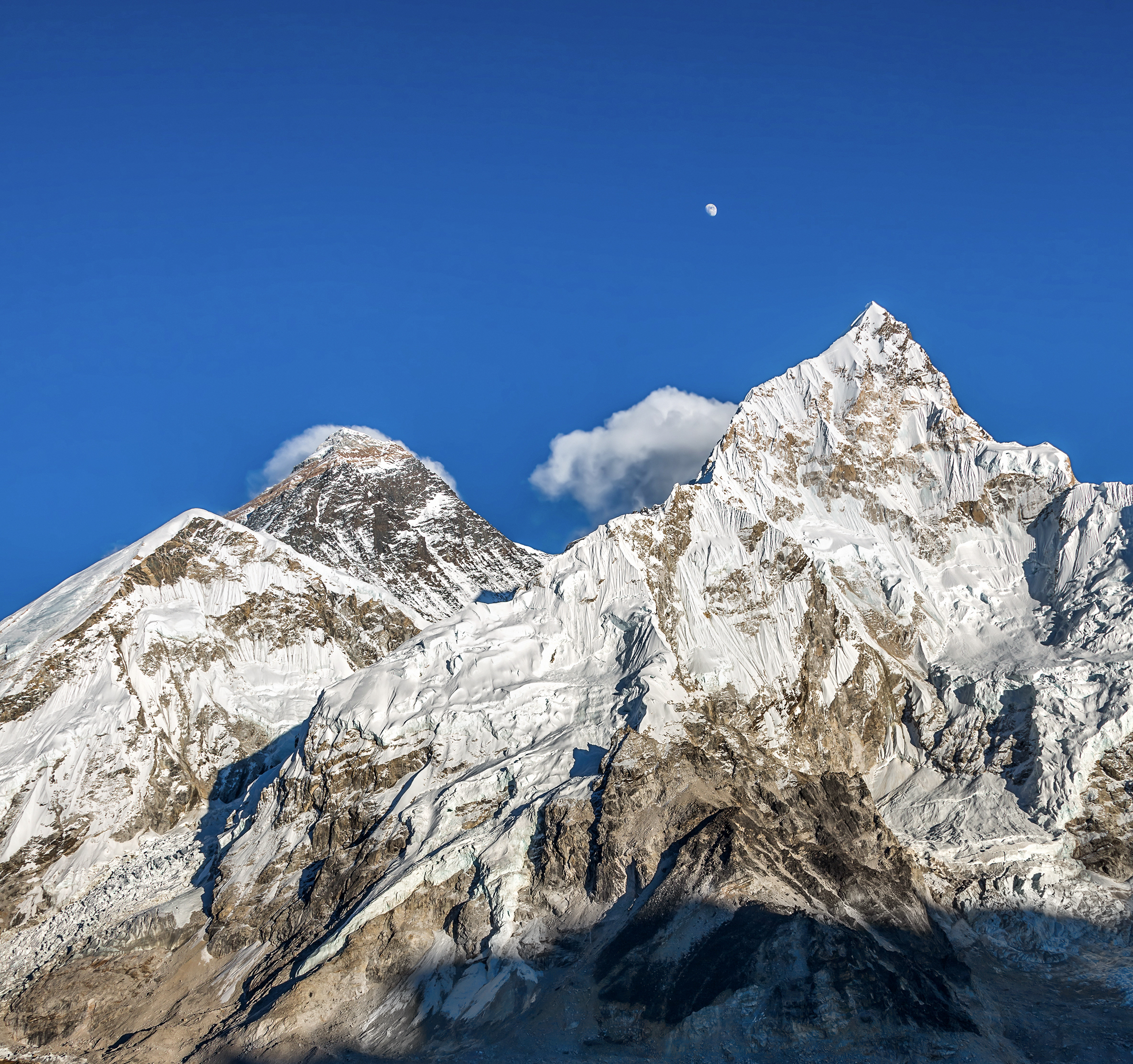With the help of a helicopter tour, my wife and I were able to see deformation involving 'Ductile' and 'Brittle' types given the 'fluid' shape or pieced rock present. Existence of both types is mainly due to the vastness of the Himalayas', various temperature, confining pressure, strain rate, and composition that is present within its' near 230,000 square miles. Accompanying us within this tour was a Guide whom seemed extremely knowledgeable with all that is the Himalayas and Mount Everest. The Guide told us how the Himalayas consists of different fault zones based on obvious characteristics present. With this, they explained some of the zones being the Greater Himalaya Sequence (GHS), Main Central Thrust (MCT), and the South Tibetan Detachment (STD). The MCT was described as the major fault that was the result of the Indian Plate pushing under the Eurasian Plate along the entire length of the Himalaya (see map below). With this, the helicopter flew over an area where it could be seen how this thrusting process created what is now known as the Lesser Himalaya.
When the Indian Plate collided and thrusted over the Eurasian Plate, detrital, granites, and acid volcanic rock sediments from the Indian Plate then deposited and formed what is the Lesser Himalaya Plate. Though, as mentioned, a combination of faults and folds make up the Himalayas. From the regions that the helicopter covered, 'Brittle' thrust and reverse faults seem to dominate the structural style of these areas. With this considered, compressional forces dominate considering the Indian Plate is still moving centimeters per year, under thrusting the Eurasian Plate in which continues to push the Himalayas higher!

[Above Image Source]: (Searle & Treloar, 2019)
[Below Image Source]: (Himalaya Journey, 2020)

References:
Himalaya Journey. (2020). Mount Everest Adventure. Retrieved 08 Apr. 2020 from: https://himalayajourney.com/tour/mount-everest-adventure/.
Searle, M.P. & Treloar, P.J. (01 July 2019). Introduction to Himalayan tectonics: a modern synthesis. Retrieved 07 Apr. 2020 from: https://sp.lyellcollection.org/content/specpubgsl/483/1/1/F1.large.jpg.
USGS. (15 Sep. 2014) Understanding plate motions. Retrieved 07 Apr. 2020 from: https://pubs.usgs.gov/gip/dynamic/understanding.html.
No comments:
Post a Comment